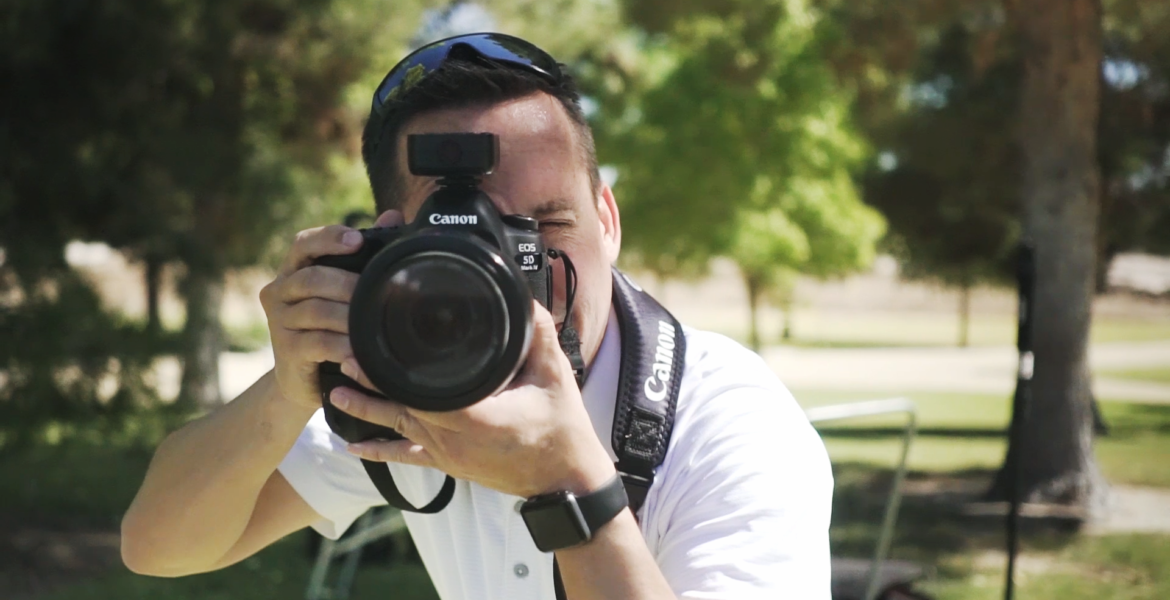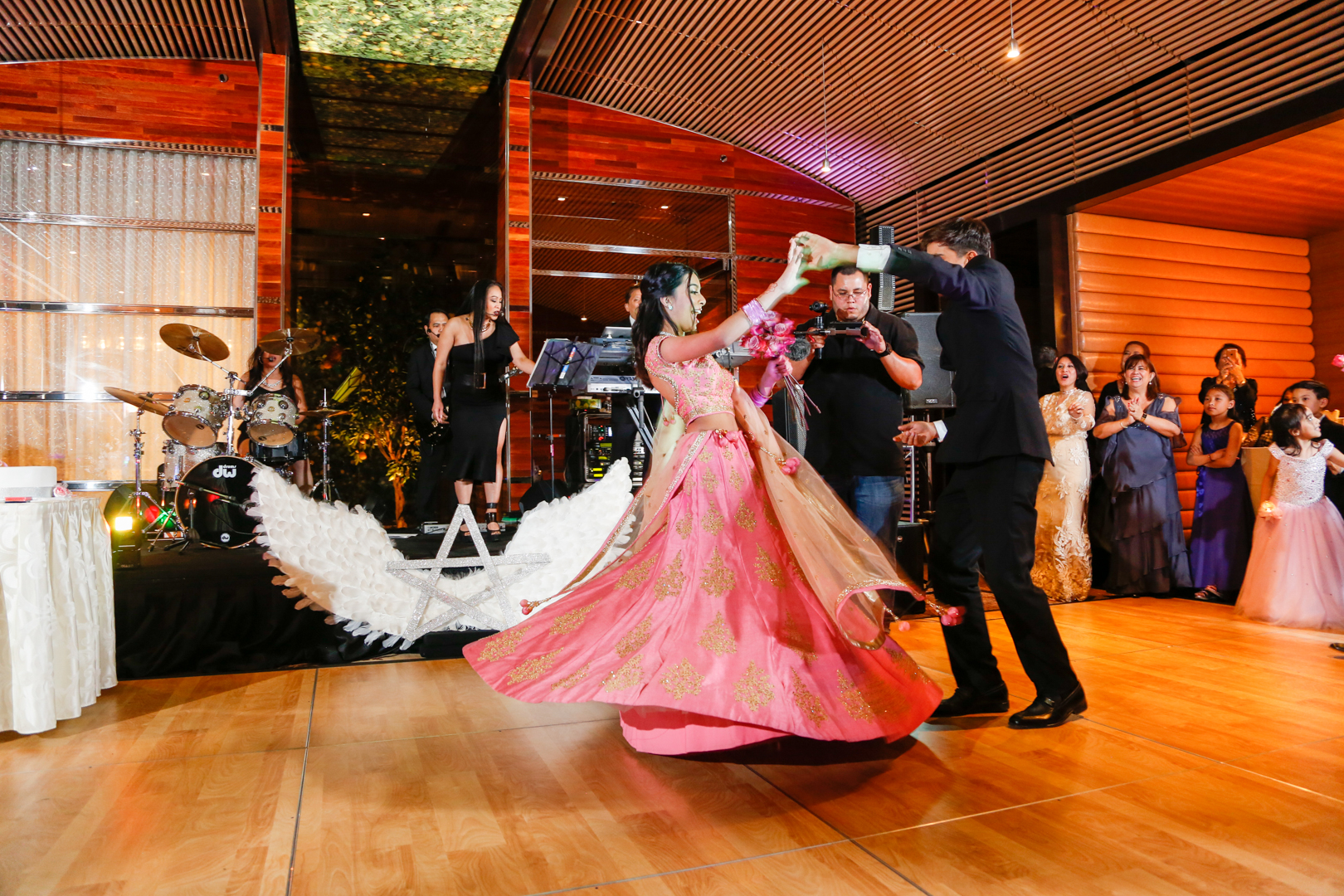PROFESSIONAL PHOTOGRAPHY MEANS PROFESSIONAL EDITING SOFTWARE
It does not matter whether you are taking pictures with a smartphone or you are a professional photographer with a studio, there’s always a need to edit and organize your photo. As there has been a considerable improvement in camera technology so also there has been an improvement in photo editing software.
For those who care about how their photos look, irrespective of the device used to shoot the pictures, especially professional photographers, perfect pictures, organizing them, and picking the best ones before printing or sharing them online, professional editing software is the best tool to use.
Most Las Vegas headshot photographers make use of the best professional photo editing software to create great headshots. Professional Photography means professional photo-editing software.
Here we are going to discuss briefly some of the best photo editing software that is used by the Las Vegas headshots photographer.
Adobe Photoshop CC: Adobe’s innovative application continues to be the leading photo editing software in the world. Photoshop offers layered image editing, 3D modeling, typography, and drawing tools. The latest edition includes raw camera profiles, loads of font and drawing capabilities, a new auto-select tool, and support for the Microsoft Surface Dial.
The Adobe Photoshop CC provides a multitude of photo correction and manipulation tools, various tools for both mobile and web design, and synced libraries. It is the ultimate editing software for any Las Vegas headshot photographer.
Adobe Lightroom Classic CC: There are Lightrooms, the Adobe Lightroom CC, and the Adobe Lightroom Classic CC. The Lightroom Classic offers professional digital photographers an efficient way to import, organize, and edit everything they shoot. It remains the leading standard in professional photo workflow software.
The Lightroom Classic is a complete package with excellent organizational tools and modern adjustments including all the printing and output options you’d ever wanted.
CyberLink PhotoDirector 8 Ultra: This software often impresses with its quick operation and clear interface. It’s an inexpensive photo workflow and editing software that gives Adobe a run for its money. However, some of the features in Photoshop and Lightroom are not included in this software.
But still, it provides features such as gradients, drawing tools, face beautification tools, blur effects, body slimming tools, face tagging, and content-aware object removal.
Corel PaintShop Pro: Corel continues to include new photo-editing possibilities in its PaintShop Pro photo-editing software which makes it the perfect alternative for Photoshop at an affordable fast. It has powerful features like that of Photoshop including effects and editing tools, face recognition, tutorials, and good a collection of vector drawing tools that make it easy for a Las Vegas headshot photographer to print perfect pictures.
DxO PhotoLab: DXO is one of the most dynamic imaging software producers. They have renamed its main photo-editing application from OpticsPro to PhotoLab. DxO software is known for its automatic lens and camera body-based image correction, innovative photo enhancers, and unmatched noise reduction.
Adobe Photoshop Element: Adobe Photoshop Elements is our best consumer-level photo editor and organizer. It offers AI-powered auto-curation, an open-closed-eyes tool, and new Guided Edits.
Some other professional photo editing software for professional photographers include: Photoshop | Lightroom
With this editing software, a Las Vegas headshot photographer finds it easy and convenient to take impressive headshots
In the world of professional photography, capturing breathtaking moments is just the first step. To truly bring out the beauty and essence of an image, professional photographers rely on professional editing software. These software tools are a vital component of the photography workflow, allowing photographers to enhance colors, adjust lighting, and refine details to create stunning, magazine-worthy photographs. The right editing software can make all the difference in transforming a good photo into an extraordinary masterpiece.
The Importance of Professional Editing Software for Photographers
Photographers understand that capturing a great shot is only the beginning. Once the photo is taken, it needs to be edited to truly shine. Professional editing software provides the tools and capabilities needed to bring out the best in a photograph. These software programs offer advanced features that allow photographers to enhance colors, adjust exposure, manipulate lighting, and fine-tune details to create visually striking images.
One of the key advantages of professional editing software is its ability to work with RAW files, which are essentially the digital equivalent of a film negative. RAW files contain all the data captured by the camera’s sensor, providing photographers with greater flexibility and control over the final image. Professional editing software can process these RAW files, allowing photographers to make precise adjustments to exposure, white balance, and other settings without sacrificing image quality.
Additionally, professional editing software offers a wide range of creative options. Photographers can experiment with different filters, effects, and presets to achieve the desired look and feel for their photos. These software tools also provide advanced retouching capabilities, enabling photographers to remove blemishes, smooth skin, and make other enhancements to portraits and other types of images.
Common Features of Professional Editing Software
While each professional editing software may have its own unique set of features, there are some common functionalities that photographers can expect to find. These include:
Non-destructive editing: Professional editing software allows photographers to make edits to their images without permanently altering the original file. This means that photographers can always revert to the original image if needed, preserving the integrity of their work.
Layer-based editing: Layer-based editing is a powerful feature that allows photographers to make adjustments to specific elements of an image without affecting the rest of the photo. This allows for greater control and precision in the editing process.
Color correction and enhancement: Professional editing software provides tools for adjusting colors, saturation, and white balance, allowing photographers to achieve the desired look and mood for their images.
Selective editing: Selective editing tools enable photographers to apply edits to specific areas of an image, such as brightening up a subject’s face or enhancing the colors of a specific object. This helps to draw attention to important elements in the photo.
Noise reduction and sharpening: Professional editing software offers advanced noise reduction algorithms, which can effectively reduce the digital noise that often occurs in low-light or high-ISO images. Additionally, sharpening tools allow photographers to enhance the details and clarity of their photos.
Batch processing: For photographers who need to edit a large number of images, batch processing is a valuable feature. This allows photographers to apply the same edits to multiple photos simultaneously, saving time and ensuring consistency across their work.
Comparison of Popular Professional Editing Software Options
When it comes to professional editing software, there are several popular options available in the market. Let’s take a closer look at three of the most widely used tools: Adobe Lightroom, Capture One, and DxO PhotoLab.
Adobe Lightroom: Adobe Lightroom is one of the most popular choices among photographers for its comprehensive set of editing tools and seamless integration with other Adobe products. Lightroom offers a wide range of features, including non-destructive editing, advanced color correction, selective editing, and powerful organizational capabilities. It also provides access to a vast library of presets and profiles, allowing photographers to quickly apply different looks and styles to their images.
Capture One: Capture One is another professional editing software that is highly regarded for its exceptional image quality and powerful editing tools. It offers advanced color editing capabilities, precise control over exposure and contrast, and a variety of tools for retouching and local adjustments. Capture One is known for its excellent RAW processing capabilities, making it a popular choice among photographers who prioritize image quality and detail.
DxO PhotoLab: DxO PhotoLab stands out for its advanced image correction and optimization features. It uses DxO’s unique algorithms to automatically correct lens distortions, chromatic aberrations, and other optical imperfections. PhotoLab also offers a range of creative tools, including selective adjustments, local adjustments, and a variety of presets.
While all three software options are excellent choices, the best one for a photographer ultimately depends on their specific needs, preferences, and budget. It is recommended to try out different software options through trial versions or demos to determine which one aligns best with one’s editing style and workflow.
How Professional Editing Software Enhances the Quality of Photographs
Professional editing software plays a crucial role in enhancing the quality of photographs. It allows photographers to correct exposure issues, adjust colors, and fine-tune details to create images that are visually appealing and technically sound. Here are some ways in which professional editing software enhances the quality of photographs:
Exposure adjustment: Professional editing software enables photographers to correct underexposed or overexposed images by adjusting the brightness, contrast, and highlights. This ensures that the details in the shadows and highlights are properly preserved, resulting in a more balanced and visually pleasing photo.
Color correction: Colors can often appear different in a photograph compared to how they were perceived by the human eye. Professional editing software allows photographers to adjust the color temperature, tint, saturation, and vibrancy to achieve accurate and pleasing colors.
Detail enhancement: Professional editing software provides tools for enhancing the details and sharpness of an image. This is particularly useful for landscape and product photographers who want to showcase intricate textures and fine details.
Noise reduction: Images captured in low-light situations or at high ISO settings can often contain digital noise, which can degrade image quality. Professional editing software offers advanced noise reduction algorithms to reduce this noise while preserving important details.
Creative effects: Professional editing software allows photographers to add creative effects, such as vignettes, gradients, and filters, to enhance the mood and atmosphere of their photos. These effects can help photographers achieve a desired artistic look or style.
By utilizing professional editing software, photographers can take their images from good to great. The ability to make precise adjustments and enhancements ensures that the final result is a visually stunning photograph that captures the essence of the subject and evokes a strong emotional response from viewers.
Tips for Choosing the Right Professional Editing Software for Your Needs
With the multitude of professional editing software options available, choosing the right one can be a daunting task for photographers. Here are some tips to help you make an informed decision:
Define your editing needs: Consider your specific editing requirements and workflow. Are you primarily focused on portrait photography, landscape photography, or product photography? Different genres may require different editing tools and features.
Consider your skill level: Some professional editing software may have a steeper learning curve than others. If you are new to editing or prefer a more user-friendly interface, look for software that offers comprehensive tutorials and resources to help you get started.
Budget: Professional editing software can vary in cost, ranging from affordable options to more expensive ones. Consider your budget and weigh it against the features and capabilities offered by each software.
Compatibility: Ensure that the editing software you choose is compatible with your computer’s operating system and hardware specifications. This will prevent any compatibility issues and ensure smooth performance.
Try before you buy: Most professional editing software offers free trial versions or demos. Take advantage of these to get hands-on experience and determine if the software meets your expectations and aligns with your editing style.
Remember, the right professional editing software is the one that fits your needs and allows you to achieve your desired results efficiently and effectively. Take the time to research and experiment with different options to find the perfect match for you.
Professional Editing Software vs. Basic Photo Editing Tools
While there are basic photo editing tools available, professional editing software offers a wide range of advanced features and capabilities that go beyond what basic tools can provide. Here are some key differences between professional editing software and basic photo editing tools:
Advanced editing capabilities: Professional editing software offers a comprehensive set of tools for color correction, exposure adjustment, detail enhancement, and noise reduction. Basic photo editing tools, on the other hand, usually have limited capabilities and may not provide the same level of control and precision.
RAW processing: Professional editing software can process RAW files, which contain all the data captured by the camera’s sensor. This allows for greater flexibility and control over the editing process. Basic photo editing tools typically work with JPEG files, which have already undergone some level of processing and compression.
Non-destructive editing: Professional editing software allows for non-destructive editing, meaning that the original image file remains untouched. This allows photographers to experiment and make changes without permanently altering the original file. Basic photo editing tools often make permanent changes to the image, which can limit the ability to make further adjustments.
Workflow integration: Professional editing software is designed to seamlessly integrate with other photography workflow tools, such as image organizers, printing software, and online galleries. This helps streamline the entire photography process, from importing and organizing images to delivering the final product to clients. Basic photo editing tools usually lack this level of integration.
While basic photo editing tools may be suitable for simple edits and quick fixes, professional editing software is essential for photographers who want to take their work to the next level. The advanced features and capabilities provided by professional editing software allow photographers to unleash their creativity and achieve stunning results.
Training and Resources for Learning Professional Editing Software
Learning to use professional editing software effectively is essential for photographers who want to maximize their editing potential. Fortunately, there are numerous training resources available to help photographers master these tools. Here are some options for learning professional editing software:
Online tutorials and courses: Many websites and platforms offer comprehensive tutorials and courses specifically tailored to different professional editing software. These resources often cover everything from basic editing techniques to advanced tips and tricks.
Official software documentation: The official documentation provided by the software developers is a valuable resource for understanding all the features and functionalities of the software. This documentation often includes step-by-step guides, video tutorials, and troubleshooting tips.
YouTube tutorials and channels: YouTube is a goldmine of tutorials and educational content for learning professional editing software. Many experienced photographers and experts share their knowledge and techniques through video tutorials, making it easier for aspiring photographers to learn at their own pace.
Photography communities and forums: Engaging with photography communities and forums can be a great way to learn from experienced photographers and exchange knowledge. These platforms often have dedicated sections for discussing editing techniques and software-specific tips.
Workshops and seminars: Attending workshops and seminars conducted by professional photographers and experts can provide hands-on learning experiences and valuable insights into the editing process. These events often cover a wide range of topics, including editing techniques, workflow optimization, and creative approaches.
By utilizing these resources, photographers can gain the necessary skills and knowledge to leverage professional editing software effectively. Continuous learning and experimenting with different techniques will help photographers develop their unique editing style and enhance the quality of their work.
Integrating Professional Editing Software into Your Photography Workflow
To make the most of professional editing software, it is important to integrate it seamlessly into your photography workflow. Here are some tips for incorporating professional editing software into your workflow:
Import and organize: Use the software’s import and organization features to efficiently manage and sort your images. This will help you keep track of your work and easily locate specific photos for editing.
Apply presets and profiles: Many professional editing software offers presets and profiles that can be applied to images with a single click. Experiment with different presets and profiles to find the ones that align with your desired style and save time during the editing process.
Develop a consistent editing style: Developing a consistent editing style can help you create a cohesive body of work and establish your unique visual identity. Use the software’s editing tools to create custom presets and adjustment settings that reflect your preferred style.
Batch processing: When editing a large number of images with similar characteristics, take advantage of the batch processing feature provided by professional editing software. This will allow you to apply the same edits to multiple images simultaneously, saving time and ensuring consistency across your work.
Export and share: Once you have completed the editing process, use the software’s export and sharing options to deliver your final images to clients or share them on online platforms. Pay attention to the recommended output settings to ensure optimal image quality.
By incorporating professional editing software into your workflow, you can streamline your editing process, maintain consistency, and maximize your productivity. Experiment with different techniques and features to discover new possibilities and push the boundaries of your creativity.
Professional Editing Software for Different Types of Photography
Different types of photography require different editing techniques and tools. Here are some considerations when choosing professional editing software for specific genres:
Portrait photography: For portrait photographers, software with advanced retouching capabilities, skin smoothing tools, and precise color correction features can be beneficial. Look for software that allows for selective editing and provides a wide range of portrait-specific presets.
Landscape photography: Landscape photographers often focus on enhancing colors, adjusting exposure, and bringing out the details in their images. Look for software that offers advanced color grading tools, detail enhancement features, and the ability to manipulate exposure and contrast.
Product photography: Product photographers require software that allows for precise color correction, background removal, and image retouching. Look for software that offers tools for removing blemishes, enhancing textures, and adjusting lighting to make product images look more appealing.
Street photography: Street photographers often aim to capture candid moments and convey the atmosphere of a particular location. Look for software that offers tools for quick adjustments, such as exposure correction and cropping, to help enhance the impact of street photographs.
It is important to consider the specific editing needs of your chosen genre when selecting professional editing software. By using software that caters to your specific type of photography, you can streamline your editing process and achieve the desired results more efficiently.
Call or text 702-530-4384 to book your next Las Vegas photography session or email us at info@christianpurdie.com for more information.

















